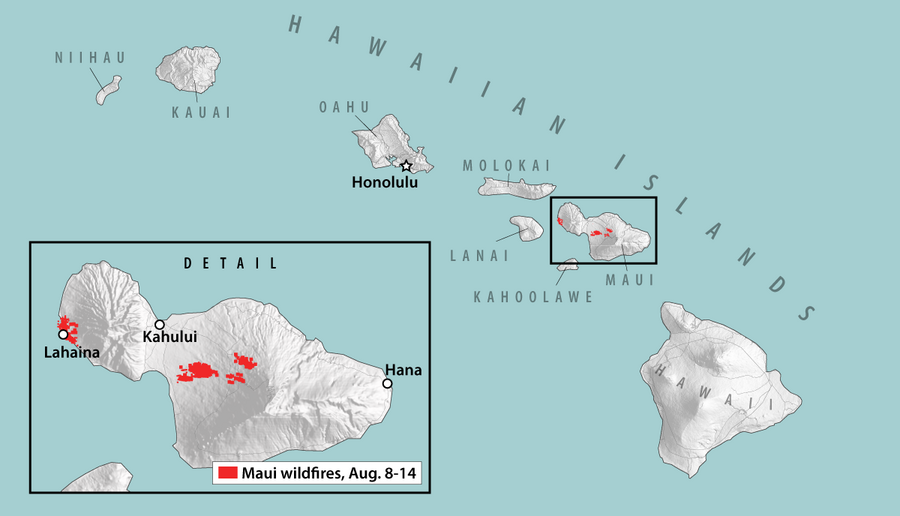The deadliest U.S. wildfire in more than a century has shocked the island of Maui. The road to recovery may be long, but grief has also brought generosity.
Monitor Daily Podcast
- Follow us:
- Apple Podcasts
- Spotify
- RSS Feed
- Download
 Howard LaFranchi
Howard LaFranchi
When my Galapagos Conservancy calendar informed me that today is World Lizard Day, I knew right away I’d be putting in a call to Peruvian herpetologist Pablo Venegas.
I’ve known Pablo since doing a story from Peru in 2021 on the discovery of new animal species at a time of alarm over mounting extinctions.
Pablo has discovered and registered 34 lizard species previously unknown to science over his two decades of research in Peru’s mountains, deserts, and rainforests. When I met Pablo, he’d just discovered a reptilian beauty with gold-rimmed eyes and a variegated hide of iridescent orange and blue.
So he seemed like just the guy to ask: Do lizards really deserve their own special day? His answer is unequivocal.
“Yes, without a doubt!” he tells me in a FaceTime call. “Lizards make up a huge part of all the reptiles in the world. We know there are something like 5,000 species. But it’s not just their abundance,” he adds. “It’s their role in the ecology of the planet and the health of ecosystems that makes them super important.”
Lizards eat huge quantities of insects – which, scientists say, makes them important to humans as controllers of insect-borne diseases. (And, of course, in some societies people eat lizards. A bite of tasty iguana, anyone?) And then lizards are an essential part of the diet of many animals, including birds of prey.
Pablo, who works with Austin-based Rainforest Partnership, recalls one expedition to Peru’s central Andes collecting examples of raptors for research and museum display. One red-backed hawk was found to have 16 lizards in its digestive system.
“Multiply all the birds of prey flying around the world by 16, then by 365, and in a year that equals ‘un montón de lagartijas,’” he laughs – a mountain of lizards.
So does all this mean Pablo will be celebrating World Lizard Day? Not, he says, like some of his herpetologist colleagues, who create special social media posts to mark the occasion.
But he later tells me that my call prompted him to review the 34 lizard species he has discovered. That was a celebration.











